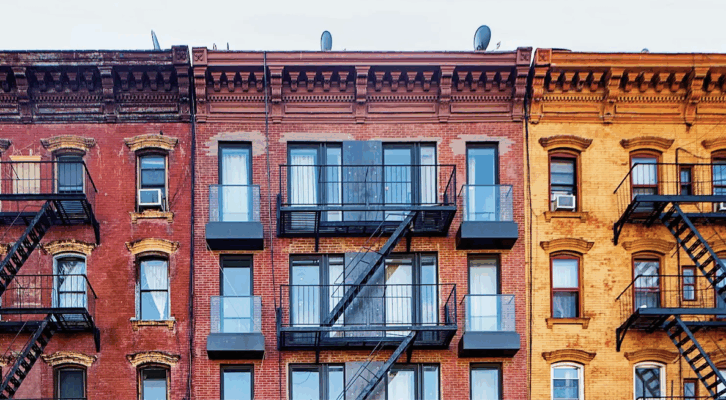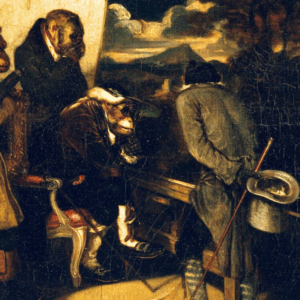
Friedrich Engels Predicted Modern Gentrification 150 Years Ago
P.E. Moskowitz Wonders What Makes a City “Valuable”?
What’s happening in San Francisco is not an anomaly, but simply one of the most extreme examples of what’s happening in nearly every city in the United States. President Ronald Reagan cut taxes on the rich from around 70 percent to about 30 percent, and, along with cuts to spending on housing and transportation at the federal level, that’s forced cities to figure out how to fund themselves.
That means cities are now trying to attract as many rich people as they can in order to feed their budgets for infrastructure, education, pensions, and everything else. And because cities must borrow heavily to do these things, they are beholden to ratings agencies such as Standard & Poor’s, which determine whether a city is financially healthy enough to take out loans or too risky an investment.
But gentrification today goes beyond an accounting trick. It’s become a theory of governance that places the needs of capital over people. One could argue that a poor city such as Detroit might need gentrification to fill its budget gaps. But what about San Francisco? The city doesn’t need to keep attracting rich people; it was not in economic crisis before the tech wave crashed on its shores. The city’s budget was already relatively balanced before the tech boom. Yet city administrators keep zoning for more condos and more high-rise office buildings and handing out tax breaks to companies; its mayor keeps courting the big tech players at conferences and in corporate boardrooms as if San Francisco were desperate for their money, even though the city is expected, at least by one estimate, to have a $10 billion budget surplus by 2017. This is the city as growth machine.
By now, we’ve come to expect that economic growth, at all costs, governs most industries and businesses in America, from finance to oil to real estate. And we’ve seen what happens when those sectors are left with little to no regulation. But it is only in the last few decades that economic growth has become the driving force in the governing of cities, to the exclusion of every other metric of well-being. Mayors are now often elected on the idea that they will run cities like businesses.
Cities, more than being places for people to live, have become ways to produce, manage, attract, and extract capital.
In Urban Fortunes, their foundational work on the economies of cities, urban theorists John Logan and Harvey Molotch argue that the people running American cities no longer care about affordability, a city’s ability to educate children, or the happiness and health of its residents; rather, they are only interested the amount of money a city is able to generate. This focus is not the result of a philosophical bug that’s somehow spread to the brains of city managers everywhere. People such as Richard Florida make the city-as-business philosophy seem appealing, but there’s something bigger going on. Logan and Molotch argue that the city-as-growth-machine is an inherent feature of late capitalism in the United States. Cities, more than being places for people to live, have become ways to produce, manage, attract, and extract capital.
Under capitalism, there’s an inherent tension between what Marxist academics call “use value” and “exchange value.” Use value means the value a place is given by being useful to people—because it houses them, because it gives them a sense of community, a place where they can work, a sense of identity. Exchange value is a place’s potential economic worth. In a society in which land can be bought and sold, every place has both a use value and an exchange value.
The inherent problem with this setup is that the poorer you are, the more likely it is that places that provide you with use value don’t offer an increased exchange value for anyone else. Molotch and Logan point out that in the heyday of urban renewal—when highways and housing projects were forced on top of low-income neighborhoods, displacing tens of thousands—the main metric for deciding where these projects should go was not crime, education, or the health of its residents, but whether those areas could be used for more profitable things. Detroit destroyed an area of the city based on the fact that the area’s residents took more tax revenue in the form of government services than they produced in the form of property taxes.
And while it’s not usually as explicitly stated as it was in Detroit, poverty and race are often the lines along which infrastructure decisions fall. There’s a reason new highways and new industry go in poor, often Black and Hispanic neighborhoods: sections of cities with lower real estate values have less tax base to be destroyed. Pushing a highway through a rich neighborhood wouldn’t only cause more opposition, it would lose a city more money.
Gentrification can be subtler than ramming a highway through a neighborhood, but its effects and—in the logic of the growth machine—its intents are often similar: when a poor neighborhood is viewed as having more potential for profit, politicians and industry work hard to change how that neighborhood is used so as to increase its exchange value. Let’s take Leticia Rios’s house as an example. Its use value is that she can live there, raise a family, and build a community in San Francisco. Its exchange value is that it’s worth much more without her in it.
In urban planning circles, use and exchange value are not controversial terms. Conservative economists and planners call the process of exchange values trumping use values “highest and best use,” the idea being that amenities and residences that are most profitable will naturally find their way into the desirable neighborhoods. In market logic, housing poor people at the center of a city is not a “highest and best use” because it is not as profitable as housing rich people or a bank at the center of a city. Even rich gentrifiers embody both use and exchange values. But the richer you are, the less likely it is that the use values of the land you use and the exchange values of it will be in conflict.
This is capitalism’s constant urban conundrum: what makes cities profitable is inherently at odds with the needs of the poor and middle classes.
A rich person gets many of the same use values out of a city as a poor person might: a place to live, community, identity. But in an era in which proximity to a city center heightens exchange value, gentrifiers simply have a better leg to stand on. “The crux of poor people’s urban problem is that their routines—indeed their very being—are often damaging to exchange values,” Molotch and Logan explain.
This is capitalism’s constant urban conundrum: what makes cities profitable is inherently at odds with the needs of the poor and middle classes (who are needed for a city to function), and centrally located land has inherent value if it can be made amenable to the rich. Gentrification may be a new expression of this conflict between land value and the needs of the poor, but it’s a problem as old as capitalism itself. Friedrich Engels essentially predicted gentrification in 1872:
The expansion of the big modern cities gives the land in certain sections of them, particularly in those which are centrally situated, an artificial and often enormously increasing value; the buildings erected in these areas depress this value, instead of increasing it, because they no longer correspond to the changed circumstances. They are pulled down and replaced by others. This takes place above all with centrally located workers’ houses, whose rents, even with the greatest overcrowding, can never, or only very slowly, increase above a certain maximum. They are pulled down and in their stead shops, warehouses, and public buildings are erected. The result is that the workers are forced out of the center of the towns towards the outskirts.
In other words, Engels was saying, in a society in which land is privatized and can be made more and more profitable, the low-wage worker poses a dilemma for those who own and control land: even if jammed in overcrowded high-rises, poor people can only afford cheap apartments, and cheap apartments do not produce a lot of profit, or at least not as much as pricey ones do. Market logic dictates that the most profitable land (land near city centers, transportation lines, parks, etc.) goes to more profitable uses.
Is there a conscious conspiracy to do this—to replace low-wage workers with higher-earning ones? It’s not necessarily as deliberate as that, and it doesn’t need to be in order for the system to have devastating impacts on the poor. Rather than the effect of individual or institutional actions, gentrification is a logical consequence of a system in which real estate is viewed as an unrestrained commodity. In cities that function as growth machines, where economic growth is prized above all else, the needs of the poor and middle class are eclipsed by the desire to inflate the value of land.
_____________________________
From How to Kill a City. Copyright © 2025 by PE Moskowitz. Available from Bold Type Books, an imprint of Hachette Book Group, Inc.
P.E. Moskowitz
P.E. Moskowitz is the author of three books, including Breaking Awake: A Reporter's Search for a New Life, and a New World, Through Drugs. They are a frequent contributor to publications including New York magazine, GQ, and The Nation. They run the newsletter Mental Hellth, which explores how capitalism affects our psyches. They were born and raised and live in New York City.



















